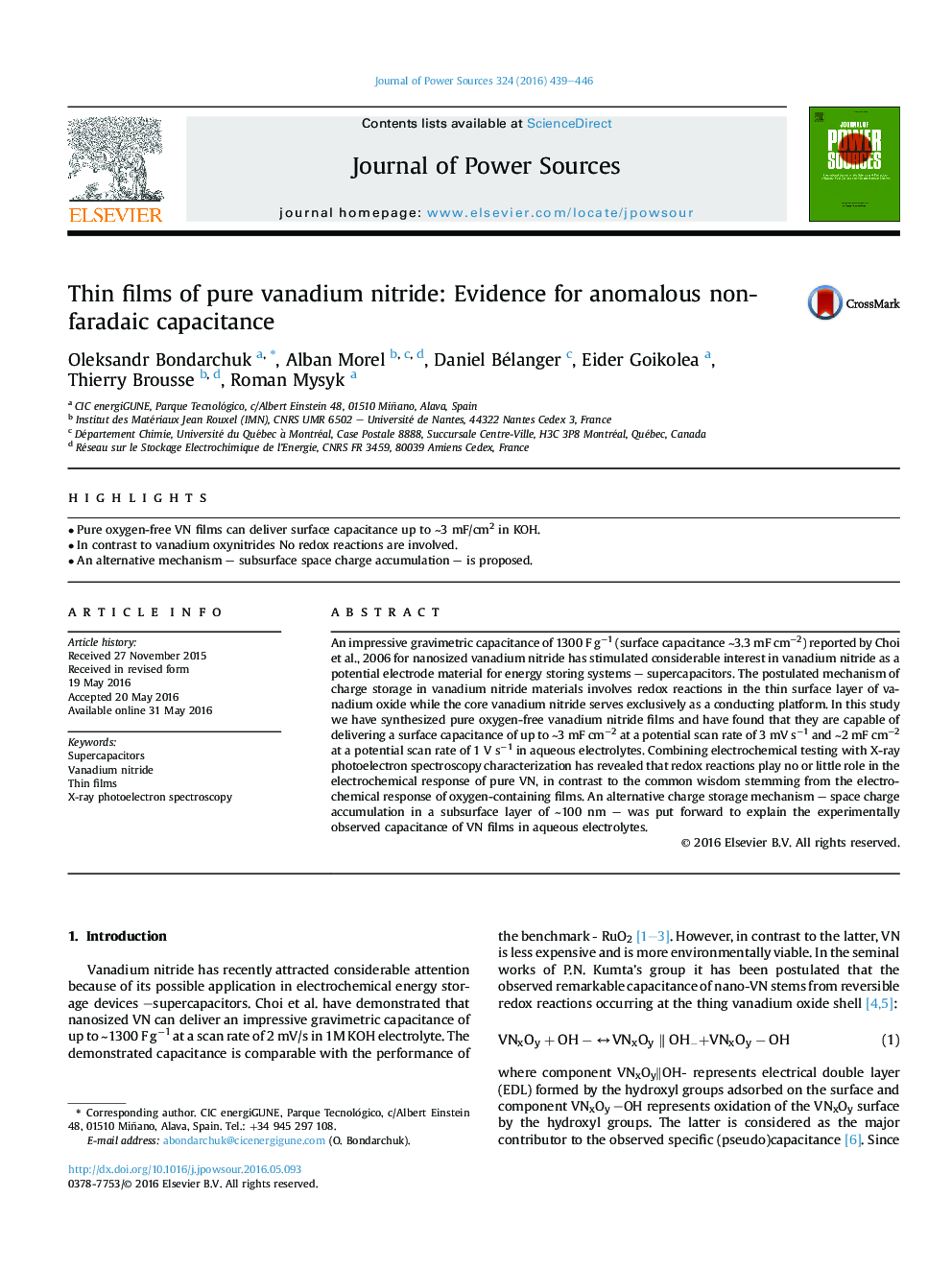| Article ID | Journal | Published Year | Pages | File Type |
|---|---|---|---|---|
| 7728109 | Journal of Power Sources | 2016 | 8 Pages |
Abstract
An impressive gravimetric capacitance of 1300 F gâ1 (surface capacitance â¼3.3 mF cmâ2) reported by Choi et al., 2006 for nanosized vanadium nitride has stimulated considerable interest in vanadium nitride as a potential electrode material for energy storing systems - supercapacitors. The postulated mechanism of charge storage in vanadium nitride materials involves redox reactions in the thin surface layer of vanadium oxide while the core vanadium nitride serves exclusively as a conducting platform. In this study we have synthesized pure oxygen-free vanadium nitride films and have found that they are capable of delivering a surface capacitance of up to â¼3 mF cmâ2 at a potential scan rate of 3 mV sâ1 and â¼2 mF cmâ2 at a potential scan rate of 1 V sâ1 in aqueous electrolytes. Combining electrochemical testing with X-ray photoelectron spectroscopy characterization has revealed that redox reactions play no or little role in the electrochemical response of pure VN, in contrast to the common wisdom stemming from the electrochemical response of oxygen-containing films. An alternative charge storage mechanism - space charge accumulation in a subsurface layer of â¼100 nm - was put forward to explain the experimentally observed capacitance of VN films in aqueous electrolytes.
Related Topics
Physical Sciences and Engineering
Chemistry
Electrochemistry
Authors
Oleksandr Bondarchuk, Alban Morel, Daniel Bélanger, Eider Goikolea, Thierry Brousse, Roman Mysyk,
